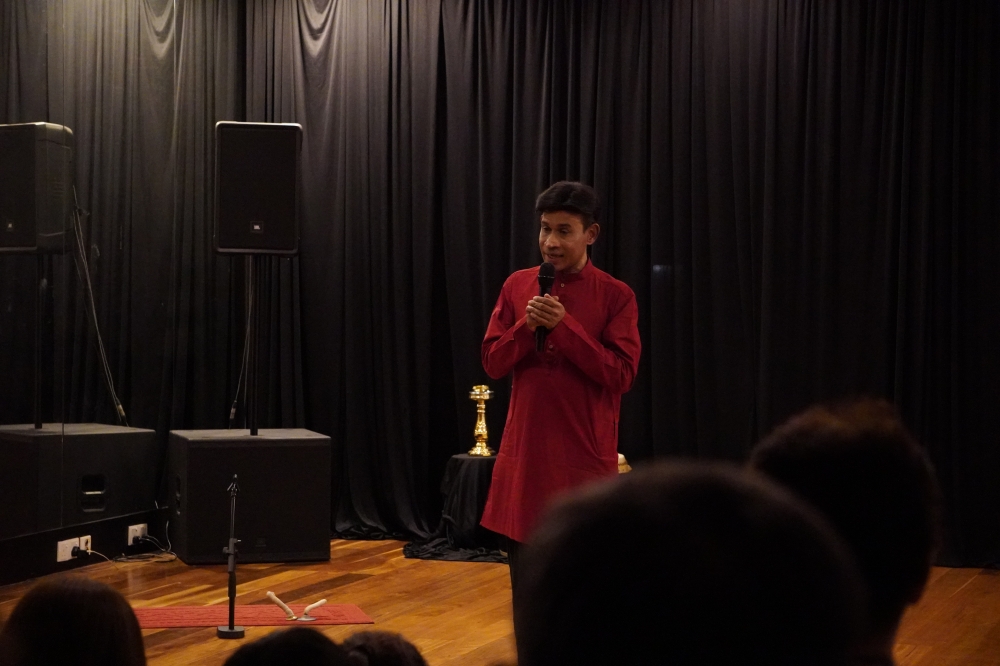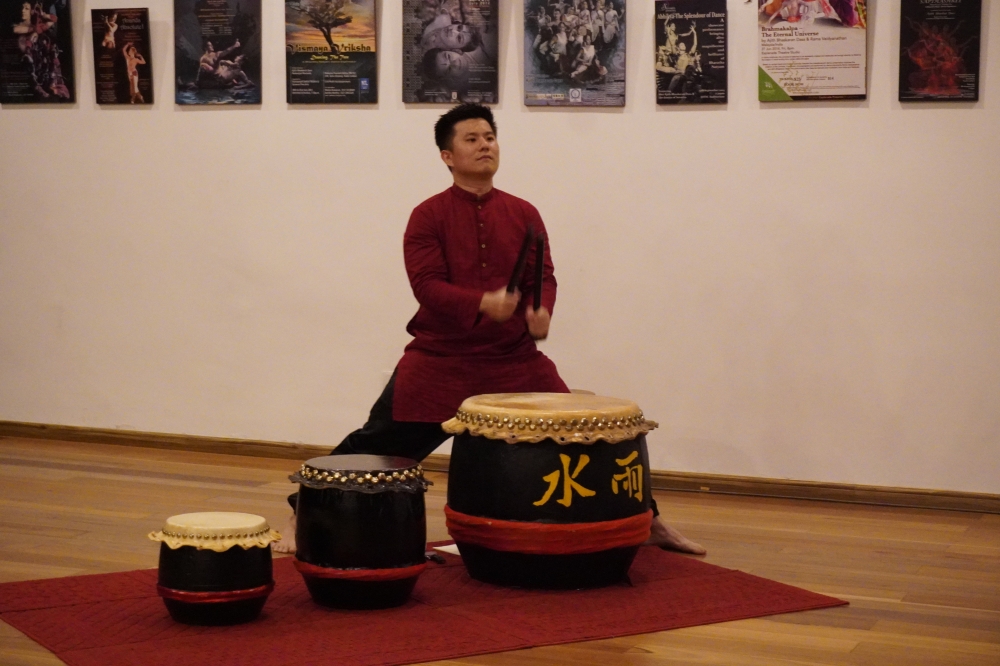KUALA LUMPUR, Sept 1 — Being a stickler for tradition, bharatanatyam master Ajith Bhaskar makes sure that his students strictly adhere to the beats that he meticulously counts while they dance.
Still, that does not deter him from giving a Malaysian twist to the 2,000-year-old dance form.
Last month, the Johor Baru-born choreographer presented a rather unique performance: a Chinese male bharatanatyam dancer performed to Indian classical rhythms belted out by two traditional Chinese drummers.
The cross-cultural collaboration called “Aikya Kala” began when the drummers, Lim Yu Kai and Gan See Shyan, approached Ajith after a forum in June 2023.
Intrigued by the intricacies of Indian rhythms, the duo learned drumming Indian rhythms under Ajith’s tutelage at the Suvarna Fine Arts dance academy for almost a year before the “Aikya Kala” performance.
Lim and Gan have been playing Chinese drums since their primary school days and are currently part of a well-established 24 Festive Drums troupe in Johor Baru.

Mastering Indian rhythms, however, was a different ballgame for them.
“The 24 Festive Drum system is similar to the Western music beats.
“However, the Indian taalam is complex and requires us to multitask. We have to count and clap the beats to keep the tempo while singing the rhythms,” Gan said.
The taalam — which means “clap” in Sanskrit — corresponds to a musical metre in Western music, except that in Indian classical music, the beats are counted by hand clapping or verbally while tapping fingers on the thigh or by striking a pair of small cymbals.
Only Indian classical music has this concept of having a human metronome to maintain the cycles of rhythm, Ajith said.
“Indian classical music has the most complex rhythm system among all South Asian music systems.
“Unlike Western and Chinese music that has only two cycles of rhythms, Indian classical music has a cycle of five rhythms and seven different taalam.
“For bharatanatyam, the rhythms are traditionally produced from the mridangam — a double-sided drum with the right side producing sharp, high-pitched tones while the left side emits deeper, bass tones.
“Our challenge was to translate the taalam onto traditional Chinese drums, which are typically monotone but produce varying sounds according to their sizes,” he explained.
Having trained under eight bharatanatyam masters including the legendary Datuk Ramli Ibrahim, Ajith has taught the art to over 400 students at home and abroad since 1993.

In 2000, he became the first Indian male classical dancer to be featured at the International Arts Festival in Germany, and in 2003, he was the first Malaysian to perform at the Lincoln Centre and Joyce Theatre in New York.
Now, at 56, the University of Malaya law graduate continues to nurture new talents and explore cross-cultural collaborations to celebrate Malaysia’s cultural diversity via dance.
“He is a traditional master with a modern mindset,” one of Ajith’s students, Lim Shao Xi, described the bharatanatyam trainer.
Lim, 27, started learning bharatanatyam from Ajith in 2016 and after eight years of rigorous training, he made history as the first Chinese male to perform a solo dance debut (arangetram) in Johor in May this year.
He also performed at the “Aikya Kala” showcase, which marked a sweet reunion for him and the two drummers who studied at the Foon Yew Secondary School in Johor Baru.
“For me, Indian classical dance is a form of personal engagement.
“Through bharatanatyam, I can connect with the Indian ethos and mythology and these elements help me connect with human emotions,” Lim, a fine arts graduate from National Sun Yat-sen University in Taiwan, said.
Meanwhile, Ajith has more plans in the pipeline for the “Aikya Kala” initiative, which includes featuring 24 Chinese drums alongside the mrdangam and other traditional musical instruments such as erhu and even kompang or gambus.
Regardless of what Ajith brings to the stage next, he is determined to deliver nothing less than a truly Malaysian bharatanatyam.






















